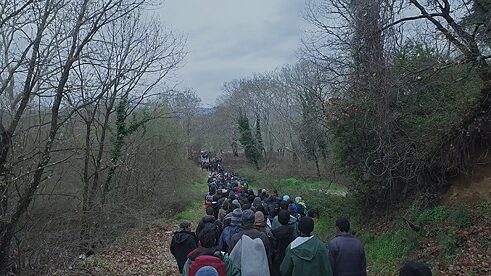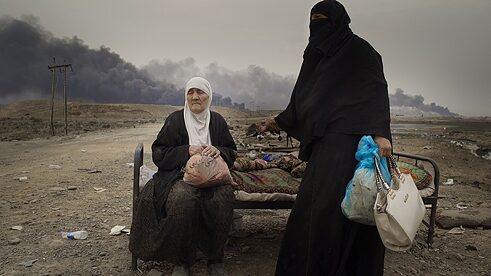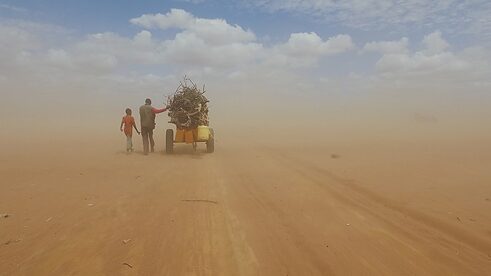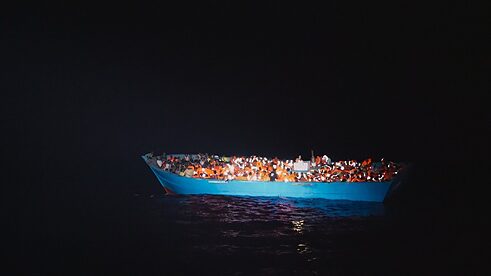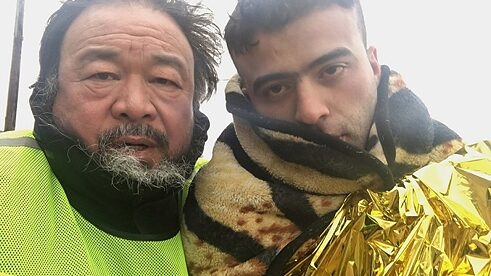Cinema release
Human Flow: The film Ai Weiwei had to make
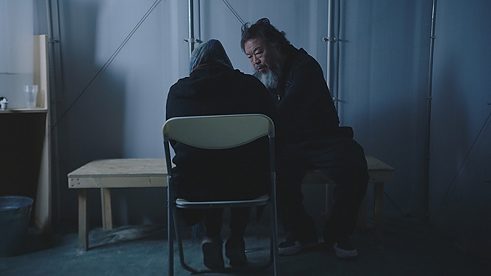
Making the trip from his Berlin studio to the Sydney Biennale to unveil his latest work, Chinese artist and activist Ai Weiwei once again contemplates a familiar topic: the plight of the millions considered displaced, fleeing horrific circumstances in their homeland, and trying to cross international borders — and waters — in search of a brighter future.
Indeed, his current piece on the matter is straightforward, but effective. There’s no missing the 60-metre rubber lifeboat that is The Law of the Journey, or avoiding the real-life situation it’s commenting on, particularly with its attached array of faceless figures.
Huge in scale as well as in its statement, The Law of the Journey proves a quintessential Ai effort; long past the point of being known just for his output, it’s yet another creation that uses his fame to tackle something that’s of clear importance to him. Late last year, he also did just that in a New York installation called Good Fences Make Good Neighbours, which saw over 300 pieces placed around the city as a commentary about boundaries, walls and the restrictions that come with them. His new documentary, the similarly refugee-focused Human Flow, follows in the same footsteps.
EXPLORING THE ON-THE-GROUND REALITY
Where his tangible art projects have adopted a number of approaches to his recurrent subject of interest— including his 2016 studio on the Greek Island of Lesbos, set up specifically to examine the European refugee crisis — the film prefers to present the on-the-ground reality. And with more than 40 camps in 23 countries forming part of his globe-spanning effort, there’s much to show. In sweeping, drone-shot aerial footage and roving, iPhone-filmed visuals alike, Ai explores the experiences of the 65 million people endeavouring to make their way to a new home. It’s a mammoth task. Of course, the scope of what he’s attempting to cover, convey and achieve is never lost on the filmmaker, and nor does it escape attention in the documentary.In delving into a scenario that has reached levels on par with the Second World War, as the movie’s on-screen explanatory text states, Ai lets the big picture linger as much as the minutiae. Accordingly, true to the artist’s form, the mechanics of much that’s within his frames appears simple; however, it always proves anything but. Boats comparable to his latest installation glide across the sea, overflowing with passengers. Lines stretch as far as the eye can see, comprised of trudging hopefuls attempting to trek between countries. Makeshift camps expand just as far, or even take over old aircraft hangers as seen in Berlin’s Tempelhof. The countries change, and the specific details, but the situation remains the same.
Ai doesn’t overlook the personal side of his topic, chatting with refugees, letting them tell their tales and helping them in various ways in some of his on-screen appearances. As the audience would expect of a documentary on the matter, nor does he exclude contextual facts or newspaper headlines either. To gain a perspective on the sheer size of the problem, however — of how many people are suffering, and how many he can’t give voice to even in a film that spans 140 minutes — he frequently favours the opposite extreme. Not only does Human Flow succeed in its awareness-raising quest as a result, but it also becomes exactly what Ai is best known for: a visually striking piece of art that contemplates a vital subject.
